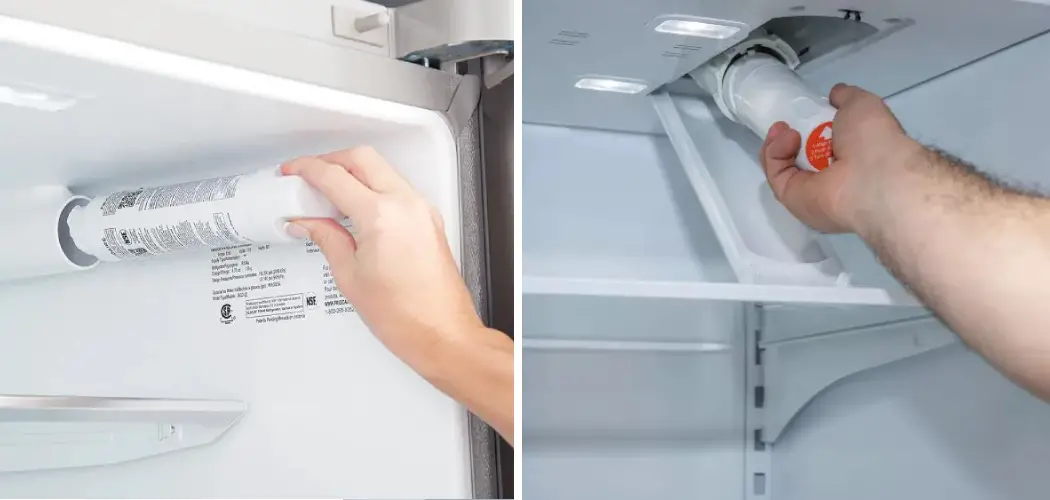Dealing with a leaking refrigerator water filter can be a frustrating experience that not only leads to water wastage but also potential damage to your kitchen floor and surrounding areas. Leaks can occur due to a variety of reasons, from improper installation to worn-out components.
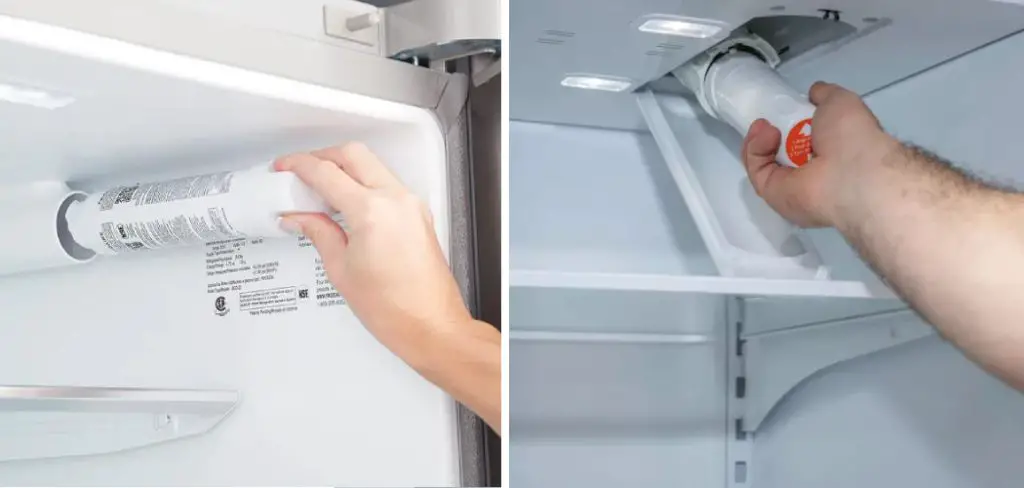
Knowing how to effectively address and fix a leaking refrigerator water filter is essential for maintaining the functionality of your appliance and preventing further issues. In this guide, we will delve into how to fix a leaking refrigerator water filter. From pinpointing the source of the leak to implementing practical solutions, we will equip you with the knowledge and steps needed to restore your refrigerator’s water filter system to leak-free operation.
Importance of a Properly Functioning Refrigerator Water Filter
The importance of having a properly functioning refrigerator water filter cannot be overstated. It ensures that the water we drink is free from impurities, which can cause serious health issues. Additionally, it also helps to maintain the quality and taste of your food and drinks by ensuring that they are uncontaminated by any unwanted particles.
Without a working filter, these contaminants can seep into the water and cause it to taste off or unpleasant. It is therefore important to keep your filter in good condition and replace it regularly to ensure that your refrigerator water is safe for consumption.
If you suspect that your refrigerator water filter is leaking, then don’t fret. There are a few simple steps you can take to help identify and fix the problem. First, inspect the filter and look for any signs of damage. If you can identify the source of the leak, then try to repair it using a sealant or other appropriate material. If the damage is too extensive or difficult to fix on your own, then consider purchasing a replacement filter.
The Issue of a Leaking Water Filter
Leaking refrigerator water filters can present a real problem, especially if you’ve already gone through the trouble of installing one. Unfortunately, it’s not always easy to identify or fix the issue without going through a few steps. To help ensure your filter stays in good condition and keeps your fridge running smoothly, let’s look at what causes leaking and how to stop it from happening.
The most common causes of a leaking refrigerator water filter are the following:
- A loose connection between the filter and the water line – If your filter isn’t securely connected to the water line, it could be causing a leak. Make sure that all connections are tight and secure to avoid this issue.
- Clogged or dirty filters – When your filters become clogged or dirty, it can cause them to leak. To avoid this issue, make sure you’re regularly replacing or cleaning your filters.
- Contaminated water supply – If the water supply is contaminated with sediment or minerals, it can lead to a leaking filter. Make sure that the water coming into your fridge isn’t contaminated in any way for best results.
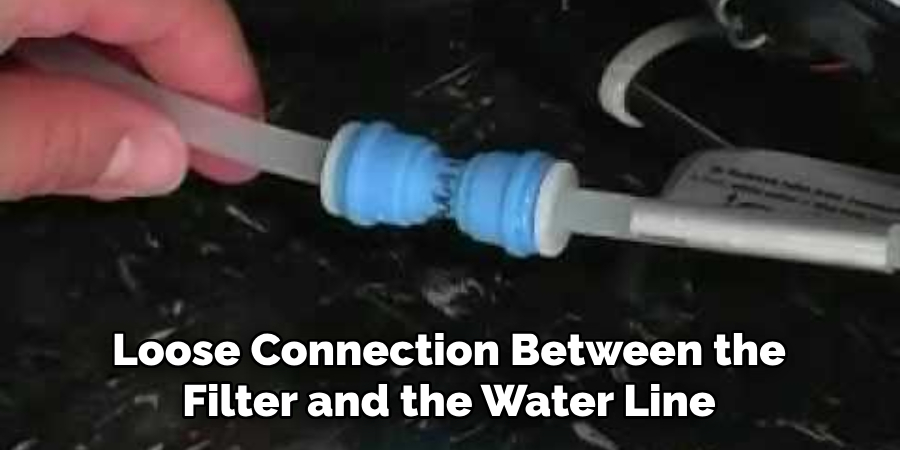
10 Ways How to Fix a Leaking Refrigerator Water Filter
Method 1: Check for Proper Installation
At the crossroads of a leaking refrigerator water filter lies a foundational factor – proper installation. Embarking on the journey to rectify a leak necessitates a retracing of steps to the very beginning – the moment of installation. Armed with the guidance of the manufacturer’s instructions, cast a discerning eye over each detail.
Each connection, each fitting, and each alignment assumes significance in the orchestration of a leak-free system. Delicately, almost ceremoniously, halt the flow of water by turning off the water supply. With hands deft and cautious, inspect the connections – the intricate tapestry of water filter, filter housing, and water lines.
Method 2: Tighten Fittings and Connections
In the lexicon of leaks, one term takes center stage – loose fittings and connections. A symphony of water flow and filtration can be disrupted by a loose connection, orchestrating a cascade of drips and dampness. Your task, seemingly modest, requires a wrench, an eye for detail, and the patience of a craftsman. Approach this endeavor with deliberation, for a hasty turn can mar the harmony of the seal. Before you embark, cast a theatrical pause upon the water supply, halting its dance.
Method 3: Inspect O-Rings and Gaskets
Within the anatomy of your refrigerator water filter lies a duo of silent sentinels – O-rings and gaskets. These humble yet vital components bear the responsibility of maintaining the integrity of the seal. In your quest to quell leaks, a moment of reverence awaits.
As if unfolding a delicate treasure map, guide yourself to the filter housing, embarking on a journey of disassembly. Here, within the realm of O-rings and gaskets, you shall unearth the secrets of leaks. With the water supply subdued, examine these unsung heroes, their surfaces tracing a story of time and use.
Method 4: Ensure Proper Alignment
In the world of leaks, the notion of misalignment stands as a formidable adversary. A water filter that exists outside the realm of proper alignment within its housing can undermine the grand symphony of water flow. Your task requires precision, akin to the setting of a gemstone.
As if unraveling a puzzle, disassemble the filter housing, laying bare the heart of the system. Gaze upon the filter, its alignment a key to the puzzle. Embrace the guidance of the manufacturer’s instructions, allowing them to steer your hand. With tenderness, place the filter back into its designated position, feeling the satisfying embrace of proper alignment.
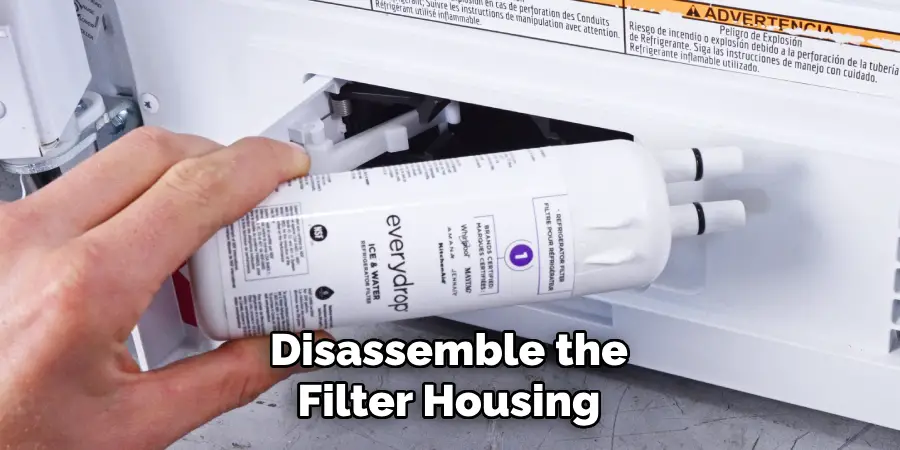
Method 5: Replace the Water Filter
As seasons shift, so too does the condition of your refrigerator water filter. Time, an omnipresent companion, bestows wear and tear upon this vital component. In the event of a stubborn leak, when all avenues of investigation yield ambiguity, the replacement of the water filter emerges as a beacon of resolution.
Navigate the landscape of replacement filters, guided by the manufacturer’s counsel. Select a replacement that aligns with your refrigerator model, breathing new life into the filtration process. This act, seemingly humble, often heralds the cessation of leaks and the resurgence of efficient water filtration.
Method 6: Examine Water Lines
Within the intricate web of your refrigerator’s water filter system, water lines emerge as lifelines, channels of sustenance. Yet, these lines are not immune to the passage of time and use. The tale of leaks can often be traced back to compromised water lines. With the water supply stilled, embark on an expedition of inspection.
With meticulous eyes, scan the water lines for signs of vulnerability – the subtle nuances of cracks, kinks, or wear. Should your gaze stumble upon these telltale signs, extend the arm of renewal. Replace the affected sections with fresh water lines, ensuring that the connections are secure and the potential for leaks is quelled.
Method 7: Check Water Pressure
Water pressure, a force that dances within the veins of your refrigerator’s filtration system, can be a double-edged sword. Pressure, when regulated, is an ally in the art of filtration. Yet, in excess, it transforms into an adversary that strains the system’s components, leading to leaks. The journey of pressure regulation commences with a gauge, a tool that measures the force of water flow.
Measure the pressure, aligning it with the manufacturer’s recommended range. Should the pressure transcend this range, introduce a pressure regulator, a guardian that ushers balance and stability into the world of filtration.
Method 8: Verify Filter Compatibility
In the grand narrative of leaks, compatibility assumes significance as a hidden protagonist. The replacement filter, the new entrant, must find affinity with your refrigerator model to bestow the gift of leak-free filtration. Partake in a cross-referencing ritual, a choreography between your refrigerator’s model number and the manufacturer’s roster of approved filters.

In this dance, the correct filter emerges, a match that promises proper fitment and an end to leaks. For in the world of filtration, compatibility is not merely a technicality – it is the gateway to a harmonious alliance.
Method 9: Utilize Thread Sealant
Threads, those subtle enablers of connections, are vulnerable to the whispers of leaks. To fortify these connections, the method of thread sealant emerges as a guiding light. With reverence for the art of precision, apply thread sealant – the humble plumber’s tape or the steadfast thread sealant compound.
These agents, unassuming in nature, possess the power to weave an additional layer of defense against leaks. With a delicate touch, enrobe the threads of the fittings before their union. This gesture, seemingly small, amplifies the sealing potential of connections, unveiling a sanctuary of leak-free water flow.
Method 10: Seek Professional Assistance
In the realm of refrigerator water filter leaks, a moment may arise when the labyrinth becomes too intricate, the solutions too elusive. In this juncture, the role of a professional technician assumes significance. A master of appliance repair, a technician possesses the prowess to navigate the complexities that elude the untrained eye.
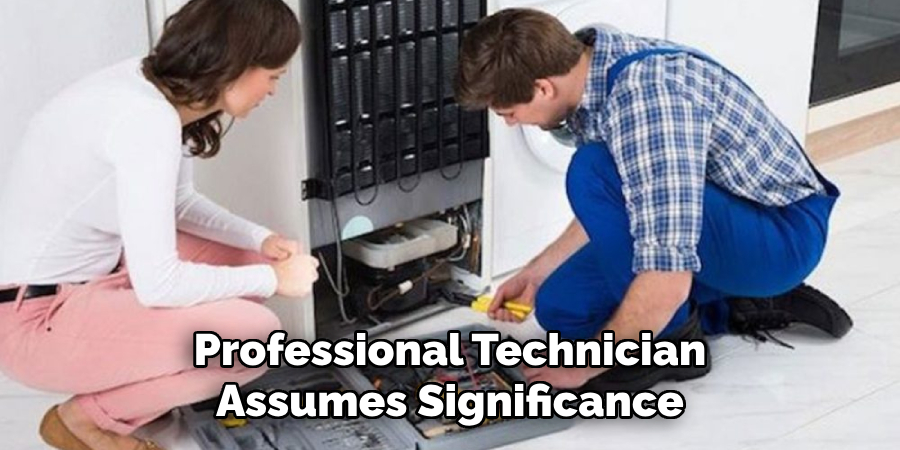
They wield the tools of diagnosis, the insights of experience, and the artistry of repair. Should your endeavors to quell leaks stand confounded, the time has come to invite the expertise of a technician, a partner in the quest for a leak-free filtration system.
Conclusion
By this point, you should have a thorough understanding of how to fix a leaking refrigerator water filter. From identifying the source of the leak to replacing the faulty filter, there’s no need to worry about costly repairs. Now that you’re all set, why not give fixing your water filter a shot?
It will save you time and money in the long run and you’ll be happy that you were able to troubleshoot and find a solution with little fuss. Good luck! Reach out if you have any questions or need additional help – as always, we’re here for you. Now get out there and enjoy clean, freshly filtered drinking water with peace of mind knowing it was fixed by none other than yourself!
Rick is a handyman who grew up helping his dad with his business. He learned a lot from him about how to fix things, and also about how to work hard and take care of business. These days, Rick is still into fixing things- only now, he’s doing it for a living.
Rick is always looking for new ways to help people grow and develop. That’s why he started contributing to this blog: to share all his experience and knowledge so that he can help people who are interested in DIY repair.

